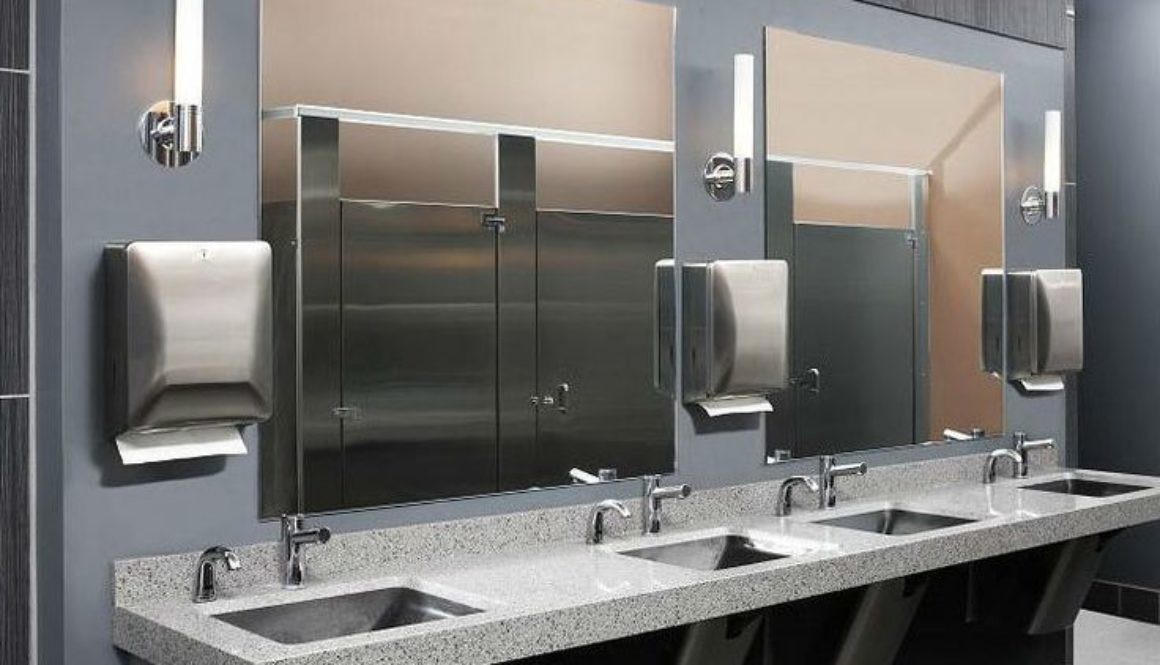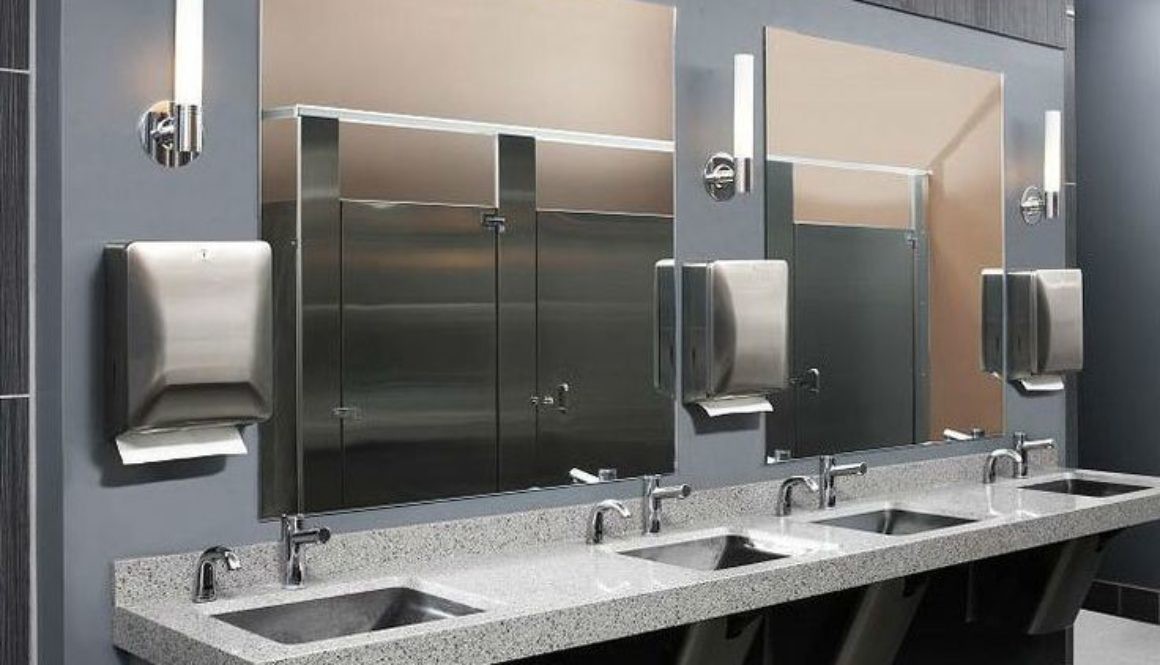
Whether you are remodeling a restroom in your commercial property, building tenant improvements in space that you have leased, or constructing a new commercial building, commercial restroom design involves aesthetic, functional, and regulatory considerations.
If you only consider functionality, your building may convey an unintended impression to your tenants and prospective tenants as well as their customers.
Even small details such as commercial restroom faucets can tell building visitors about you, your building, and your tenants. By thoughtfully selecting the wall, floor, and countertop materials, commercial faucets and other plumbing, you can present the exact impression you intend.
Five Considerations in Commercial Restroom Design for Happy Tenants and Customers
Commercial restroom design is more than tile floors, white porcelain toilets, chrome faucets, and beige stalls. While such a design satisfies all the functional roles of a restroom, it potentially falls short in many of the metrics by which tenants and their customers judge commercial bathrooms. To keep customers and tenants happy, it is important to consider the following features:
1. Appearance
While you will likely take the style of the building, its common areas, and the leased space, the trend in commercial restrooms is to lean toward a contemporary style. This style takes advantage of modern materials, open and uncluttered design, and clean lines.
The reason many restrooms borrow elements from contemporary design is that it looks clean – an important consideration when judging a restroom – and facilitates the other considerations in commercial restroom design outlined below.
2. Eco-Friendliness
Eco-friendliness is a key measure by which many judge a business. In a survey by Shelton GRP, 80% of people admitted they judge others when they see them commit environmental infractions. When a tenant, prospective tenant, or customer sees a wasteful restroom, you, your building, and your tenants risk a reputation for wastefulness.
Moreover, eco-friendliness saves money. Water-saving faucets, such as the E-Tronic® 80 faucet, are less expensive to operate, allowing you to reduce the utility expenses passed on to your tenants, directly or indirectly.
3. Accessibility
Even without laws such as the Americans with Disabilities Act (or ADA), commercial property owners and managers must ensure that their restrooms can accommodate any number of physical limitations. Touchless faucets, such as the Alpina Series faucets, can make restrooms accessible to those with limitations such as:
● Mobility
● Vision
● Balance
● Weight and height
● Flexibility and strength
In addition to accommodating those with physical limitations, many designs also accommodate their caretakers.
4. Hygiene

Commercial restroom designs that use advanced materials, such as resin countertops, reduce the transmission of pathogens and disease because they are easy to clean. Similarly, automatic flush toilets and touchless faucets reduce surfaces that can collect and harbor bacteria and viruses.
5. Durability
Durable fixtures, walls, and countertops reduce repair expenses due to wear, accidental damage, and vandalism. Fewer repair expenses mean fewer common area and maintenance (or CAM) expenses that tenants are required to pay.
Commercial Restroom Designs Minimize Costs, Accommodate Visitors, and Improve Hygiene
Style is important, but equally important factors in commercial restroom design include accessibility, hygiene, durability, and eco-friendliness. These important goals can be reached by carefully selecting restroom materials and fixtures.
Chicago Faucets® offers commercial faucets with features to fit any commercial restroom design. See these products to find one that offers the style you need.
.png)


